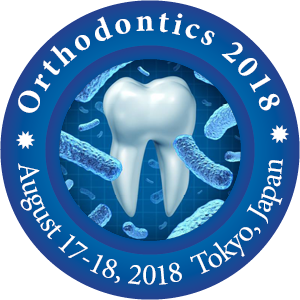
Carolina RodrÃguez Manjarrés
University of the Valley school of dentistry, Cali - Colombia
Title: Treatment of Anterior Crossbite With Lower Inclined Bite Plane. Effect on the Dental Arches
Biography
Biography: Carolina RodrÃguez Manjarrés
Abstract
The identification of the different risk factors associated with the development of malocclusions is one of the challenges faced daily by the pediatric dentist in order to provide an early diagnosis, and to avoid that these discrepancies are accentuated in the mixed and permanent dentition. According to the WHO, after dental caries and periodontal disease, malocclusions are considered a public health problem and occupy the third place of prevalence. Anterior crossbite is one of the most frequent malocclusions that can be found in the primary dentition. Is defined as the overpassing of the lower anterior teeth to the upper anterior teeth, affecting the anteroposterior plane. Objective: To evaluate the dimensional changes of the primary dental arches treated with lower inclined bite plane as a method of correction of the anterior crossbite. Methods: Ten patients aged 3 to 5 years with complete anterior crossbite were treated with a lower inclined bite plane elaborated in acrylic. An average time of the plane position: 8.5 weeks. Dental casts were obtained in 3 moments T0: before treatment; T1: 6 months after starting treatment, and T2: at the end of the first year of treatment and changes in dimensions of dental arches were evaluated. Results: In 100% of patients the anterior crossbite were corrected, statistically significant differences for the variables evaluated with the therapeutic employed were found. Conclusions: The lower inclined bite plane generated evident dental changes in a short time, without relapses and improving the dimensions of the dental arches, especially the upper arch.

